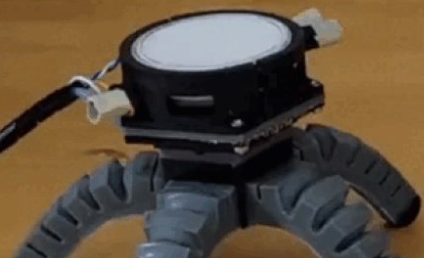Engineers have developed a groundbreaking type of robot that harnesses the natural capabilities of living fungi to control its movements and environmental sensing. This innovative biohybrid robot, designed by an interdisciplinary team from Cornell University in the United States and Florence University in Italy, uses electrical signals from an edible mushroom called the king trumpet to navigate and respond to its surroundings.
“It is about creating a true connection with the living system… so you’re seeing the physical response, because those signals we can’t visualize, but the robot is making a visualization.” Biohybrid robots controlled by electrical impulses — in mushrooms https://t.co/3o9xTBssI3
— Here for the radical normalcy🌻 (@NancyWilkening) September 5, 2024
The concept behind this development is to leverage the unique properties of living organisms to create robots that can operate in unpredictable environments. “Living systems respond to touch, light, heat, and even some unknown signals,” explained Anand Mishra, a research associate at Cornell’s Organic Robotics Lab. “We believe that if we want to build future robots capable of functioning in unexpected environments, we can utilize these living systems. The robot will react to any unknown input.”
The team demonstrated this concept by incorporating the fungi into the robot’s design. The mushrooms’ mycelium network, which serves as the fungi’s root system, was integrated into the robot’s electronics, enabling it to detect and respond to various chemical and biological signals in its environment. This setup allows the biohybrid robot to perform a range of movements and responses based on different stimuli, such as ultraviolet light.
In one example, a video shows a mushroom-controlled robot moving slowly across a surface by pumping its robotic legs. Another variation of the biohybrid robot uses wheels to maneuver. The researchers believe that combining this mobility with the fungi’s sensory capabilities could have a wide range of applications. For instance, such robots could be deployed in agriculture to monitor soil chemistry and determine the optimal time to add fertilizer, potentially reducing negative environmental impacts like harmful algal blooms.
“By growing mycelium into the electronics of a robot, we were able to allow the biohybrid machine to sense and respond to the environment,” says senior researcher Rob Shepherd, a materials scientist at Cornell.https://t.co/dHr5aaUM1g
— lofo (@fishfriescold) September 5, 2024
Rob Shepherd, a professor of mechanical and aerospace engineering at Cornell, emphasized the potential of this technology: “By growing mycelium into the electronics of a robot, we enabled the biohybrid machine to sense and respond to the environment. The future of robotics could see machines that adapt and react to the ever-changing world around them, similar to how living organisms do.”
The details of this innovative robot were published in the journal Science Robotics in a study titled “Sensorimotor Control of Robots Mediated by Electro-Physiological Measurements of Fungal Mycelia.” While this isn’t the first instance of integrating living organisms into robotics, using mushrooms offers a significant advancement in the field of biohybrid robotics due to their ability to grow and thrive in various conditions.
Previous experiments in the realm of living robots have included inserting an artificial worm brain into a Lego robot, which replicated the movements and intentions of the worm. More recently, researchers at the Massachusetts Institute of Technology (MIT) created a machine integrated with living muscle tissue that could sense and adapt to its environment.
Key Points:
i. Engineers have developed a biohybrid robot controlled by living fungi, specifically the king trumpet mushroom.
ii. The robot uses electrical signals from the mushroom’s mycelium to move and respond to environmental stimuli.
iii. This technology could have applications in agriculture, such as monitoring soil conditions and optimizing fertilizer use.
iv. The integration of living organisms in robotics offers a new frontier for creating adaptive and responsive machines.
v. The findings were published in Science Robotics, highlighting the potential for future advancements in biohybrid robotics.
Charles William III – Reprinted with permission of Whatfinger News



